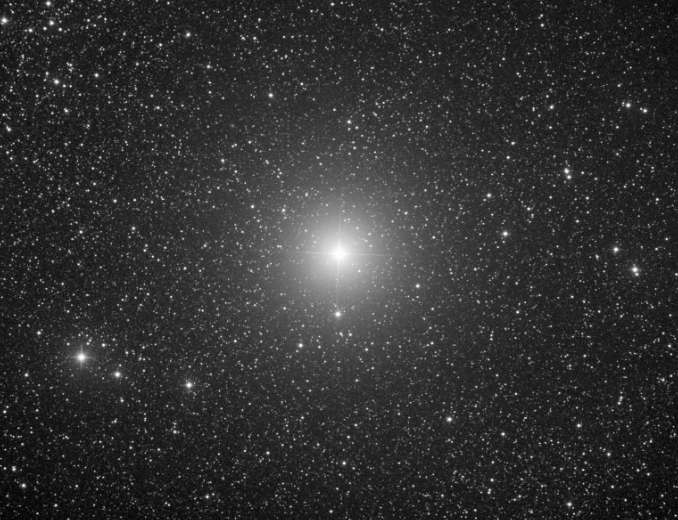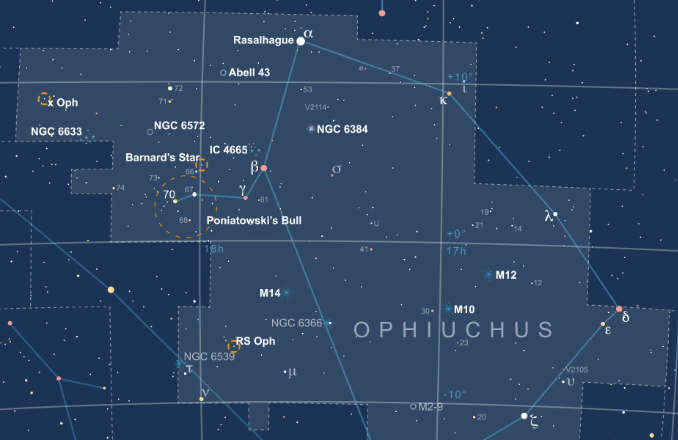The recurrent nova RS Ophiuchi (RS Oph), located in the constellation of Ophiuchus, is in a rare outburst, its first for more than 15 years. RS Oph brightened rapidly on 8 August 2021 from around magnitude +12 to shine presently at about magnitude +4.8, a 600-fold in just a day. This is its first outburst since February 2006 and only five other eruptions have been observed since 1898.

RS Oph is a cataclysmic variable star that’s further classified as belonging to a much smaller subset called recurrent novae. This is a very exclusive club, as there are just seven such systems. RS Oph is a binary star system, where a class M2 red giant star is losing material to a compact and dense white dwarf remnant. Every so often the white dwarf flings off this unwanted material in a nuclear blast, causing a huge and rapid brightening.
Recurrent novae outburst occasionally between periods of tens to hundreds of years. Classical novae, such as the recent Nova Cas 2021 and Nova Her 2021, on the other hand exhibit one massive eruption, or outburst, with the progenitor system brightening by between 8 to 15 magnitudes before slowly fading to its quiescence state.

The constellation Ophiuchus is quite well placed presently from UK shores, clearing the southern meridian in its entirety as darkness falls at about 9pm BST. RS Oph lies at an altitude of over 30 degrees roughly at the centre of Ophiuchus, on its eastern flank close to the boundary with Serpens. Zooming in, its precise position is RA 17h 51m 23s, Dec Dec –06° 42’ 50”, which places it 3.75 degrees north-west of nu (v) Oph (magnitude +3.3).
Try to observe it by midnight, as after then it becomes too close for comfort to the south-western horizon.
Unlike classical novae, astronomers can predict with a good deal of accuracy RS Oph’s behaviour in the coming weeks and months, owing to the masses of good data accrued over its previous outburst. RS Oph is likely to decline by 0.1 magnitude per day for the next 40 days or so, and then fade more slowly, by around 0.02 magnitude in the next 65 days, by which time it should be back to its pre-outburst brightness.
Make the most of any clear nights in the next week or so for an opportunity to witness a piece of astronomical history while RS Oph is hopefully visible with the naked eye. If your sky conditions are not up to the task, or RS Oph fades unusually fast, it still should be an easy capture in a pair of binoculars or a small telescope.
